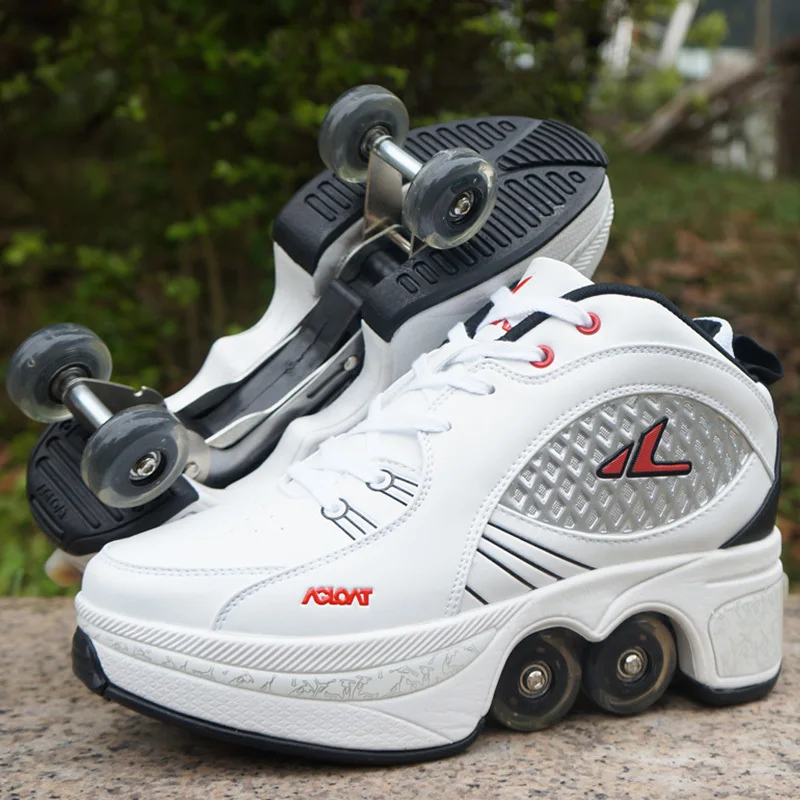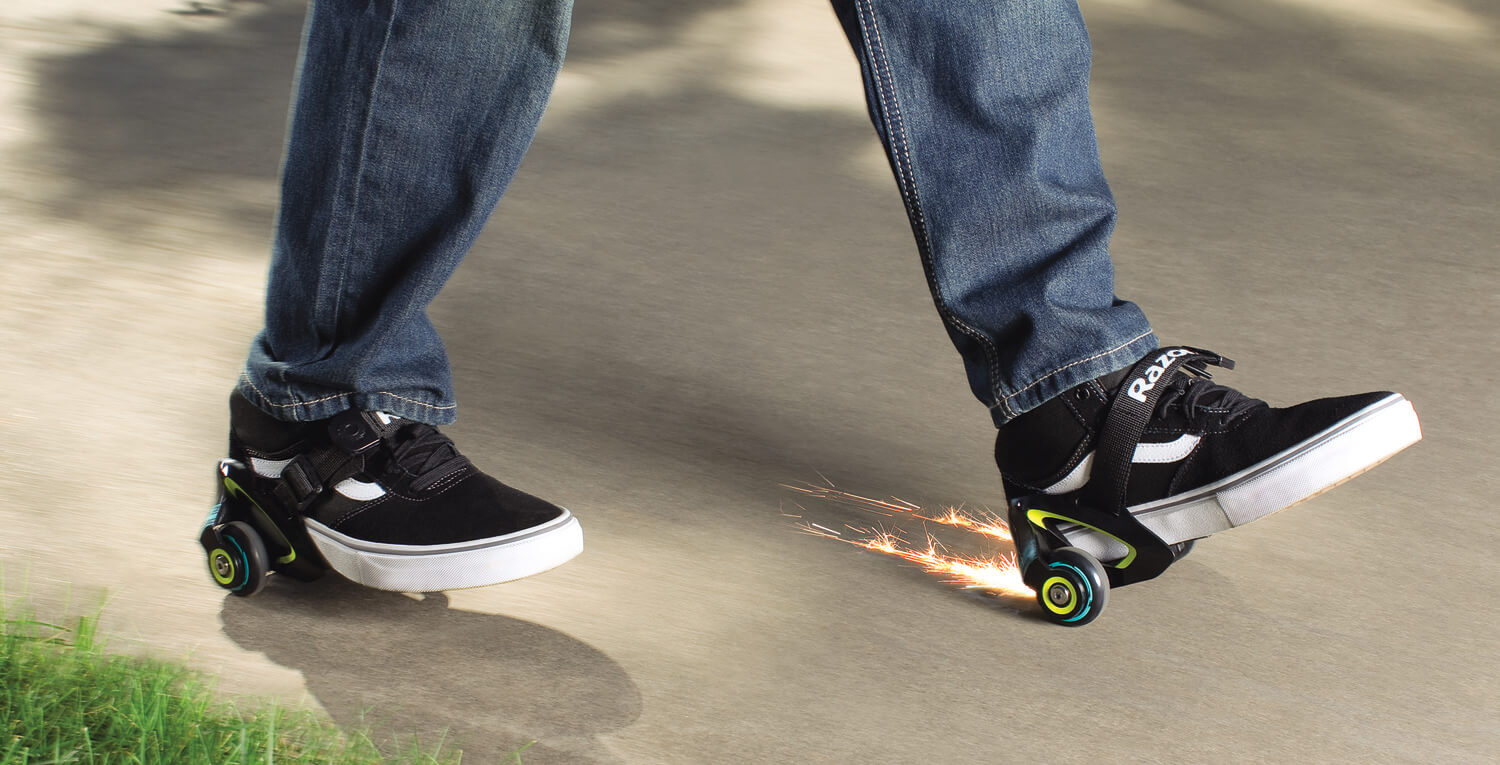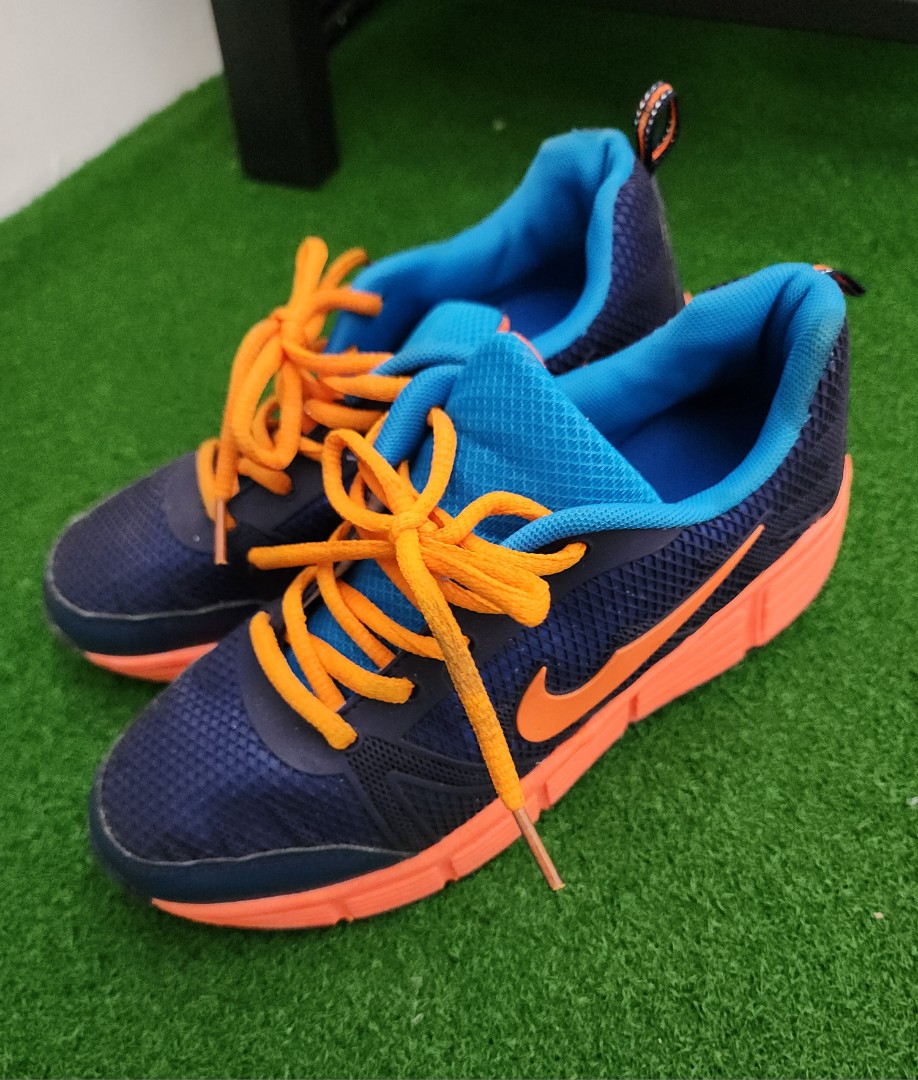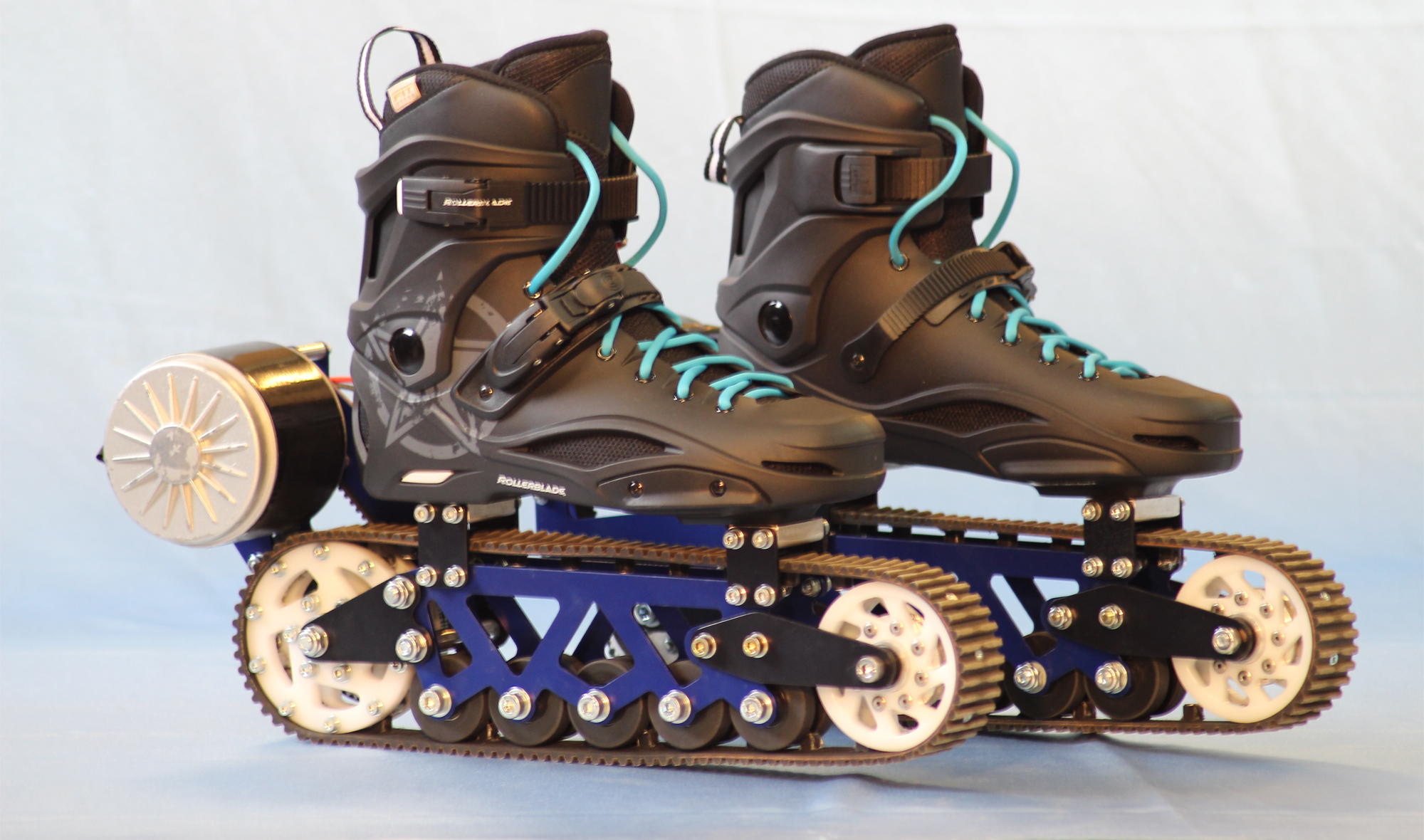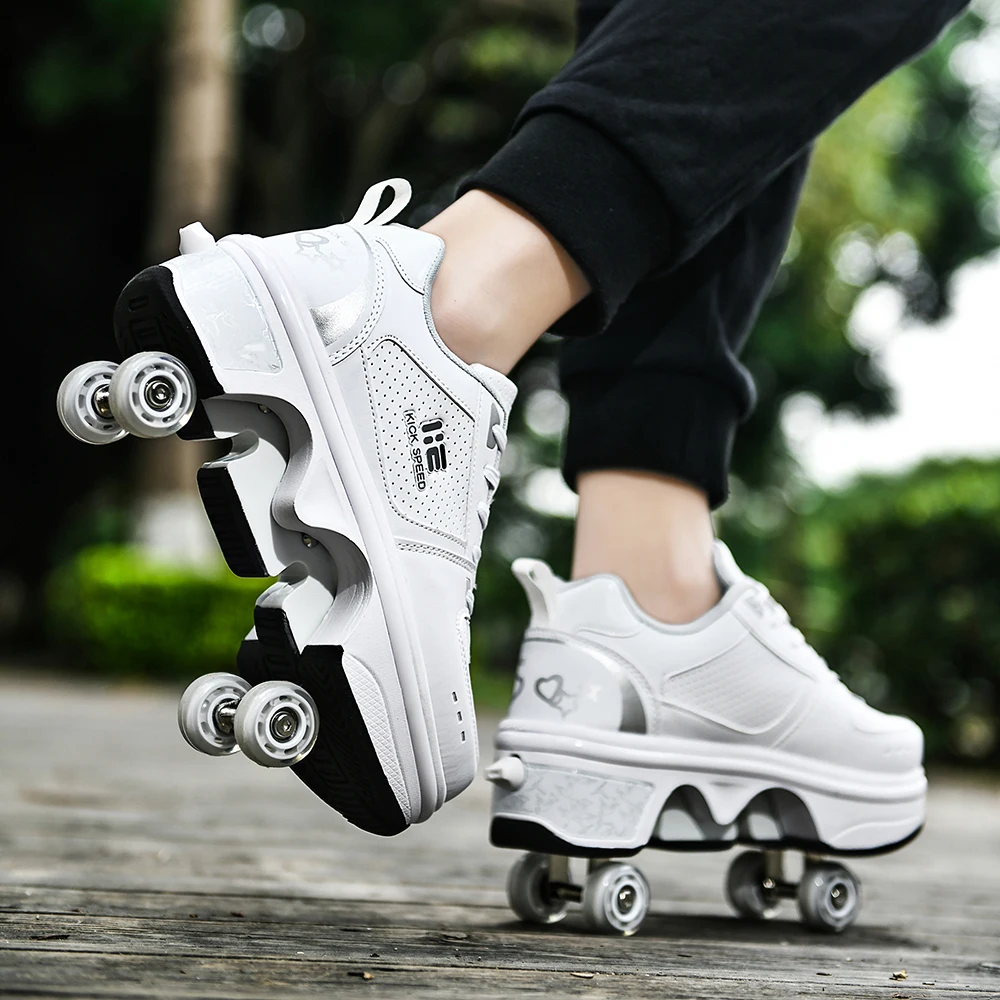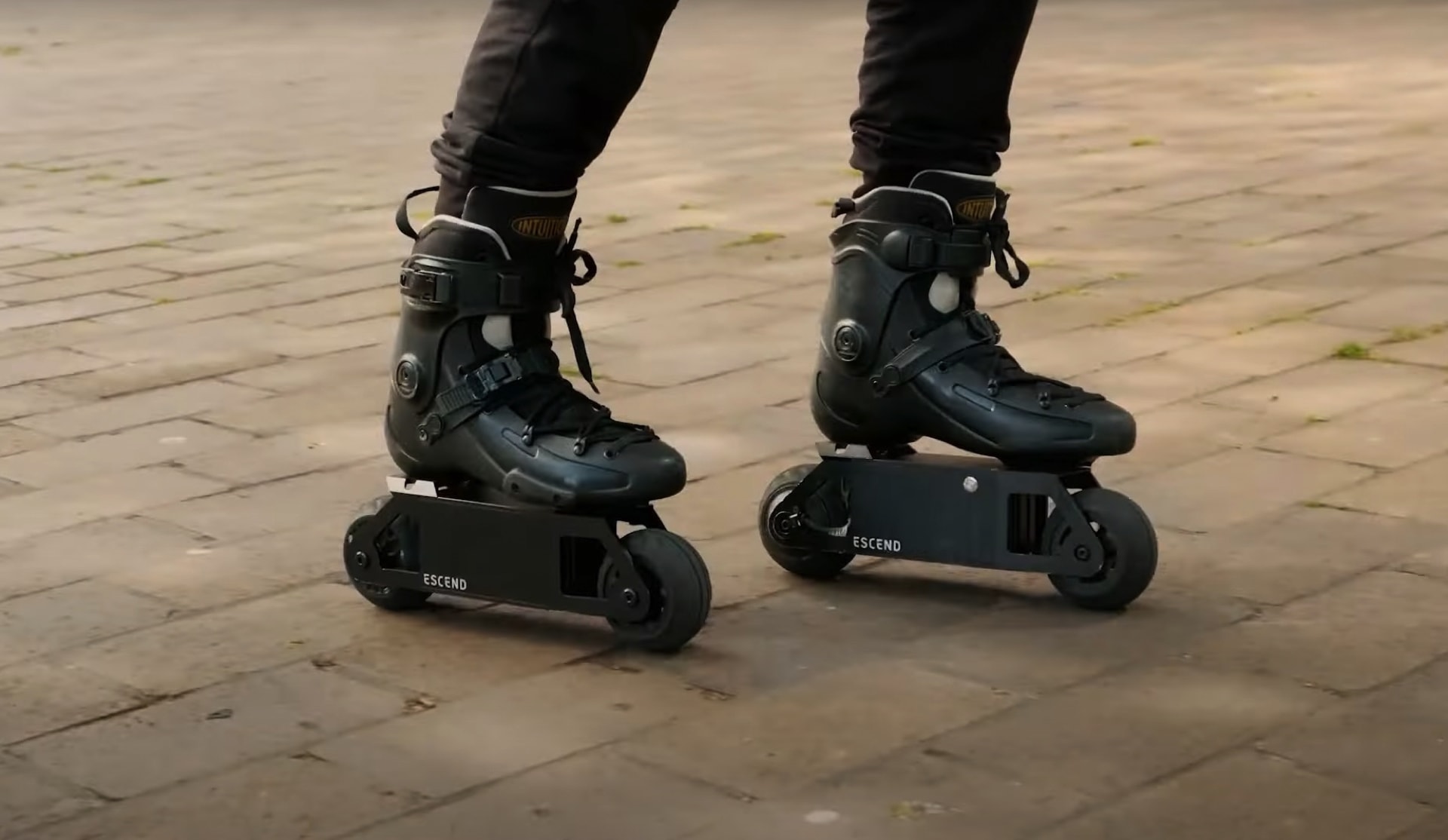Footwear With Wheels Or A Blade

The sun dipped low, casting a golden hue across the park. Laughter echoed as a young girl, maybe ten years old, zipped past on her wheeled sneakers, a blur of pink and flashing lights. Her face, alight with pure joy, perfectly captured the whimsical spirit of these unconventional modes of transport.
Footwear with wheels or blades – from the nostalgic Heelys to high-performance inline skates – represents more than just a fad. They offer a unique blend of recreation, exercise, and alternative transportation, impacting personal lifestyles and even influencing urban landscapes.
A Brief History: From Skateboards to Wheeled Shoes
The story begins, perhaps unsurprisingly, with the humble skateboard. In the 1950s, Californian surfers, craving the thrill of the waves on land, attached roller skate wheels to wooden planks. This DIY invention quickly evolved, paving the way for the development of dedicated skateparks and a thriving subculture.
Roller skates, with their quad-wheel design, enjoyed periods of immense popularity throughout the 20th century. From glamorous roller discos to competitive roller derbies, they carved a distinct niche in recreational history.
Inline skates, often called Rollerblades (a brand name that became synonymous with the sport), emerged in the late 1970s, offering a more precise and maneuverable experience. Their design, mimicking ice skates, allowed for greater speed and agility, attracting athletes and thrill-seekers alike.
Then, in 2000, Heelys burst onto the scene. These seemingly ordinary sneakers concealed a single wheel in the heel, allowing wearers to seamlessly transition between walking and rolling. They sparked a global phenomenon, captivating children and teenagers with their novelty and ease of use.
The Appeal: Freedom, Fitness, and Fun
The enduring appeal of wheeled and bladed footwear lies in their multifaceted benefits. They offer a sense of freedom and independence, allowing individuals to explore their surroundings in a playful and engaging way.
Beyond the sheer fun factor, these activities provide excellent cardiovascular exercise. Skating strengthens leg muscles, improves balance and coordination, and burns calories, contributing to overall physical well-being. According to a study by the American Heart Association, skating is a beneficial aerobic exercise that can help reduce the risk of heart disease.
Furthermore, they present an alternative mode of transportation, particularly for short distances. In urban environments, they can be a convenient and eco-friendly way to navigate crowded streets, reducing reliance on cars and contributing to a greener lifestyle.
Navigating Safety and Regulations
While undeniably enjoyable, these activities also come with inherent risks. Falls and collisions are common, especially for beginners. Safety gear, including helmets, knee pads, elbow pads, and wrist guards, is crucial for preventing serious injuries.
Many cities and municipalities have implemented regulations regarding the use of wheeled footwear, particularly in public spaces. These rules may restrict skating in certain areas, such as pedestrian zones or busy streets, to ensure public safety. It’s essential to be aware of and abide by local ordinances to avoid fines or accidents.
Parents play a vital role in ensuring their children's safety. Supervision, proper instruction, and the enforcement of safety gear usage are paramount. Choosing appropriate skating environments, away from traffic and obstacles, is also crucial.
The Cultural Impact: From Fashion to Sport
Wheeled and bladed footwear has permeated popular culture, influencing fashion trends and inspiring artistic expression. From music videos to movies, these devices have been featured prominently, often symbolizing youthfulness, rebellion, and a carefree spirit.
The rise of skateboarding and inline skating led to the development of dedicated sports, with professional athletes competing in various disciplines, such as street skating, vert ramp, and aggressive inline. These sports showcase incredible skill, athleticism, and creativity, attracting a global audience and inspiring aspiring skaters.
The influence extends beyond the sporting arena. Designers have incorporated elements of skate culture into clothing, footwear, and accessories, creating a distinct aesthetic that resonates with a wide range of consumers.
The Future of Footwear with Wheels or Blades
Technological advancements continue to shape the evolution of wheeled and bladed footwear. New materials, designs, and features are constantly being introduced, enhancing performance, comfort, and safety.
Electric skates and self-balancing shoes are emerging as innovative alternatives, offering increased speed and maneuverability. These technologies may revolutionize personal transportation, providing a more efficient and sustainable way to travel short distances.
The future also holds promise for greater integration with virtual reality and augmented reality technologies. Imagine skating through a virtual landscape or participating in a virtual race, blurring the lines between the real and digital worlds.
A Reflective Step Forward
Footwear with wheels or blades represents more than just a fleeting trend. They embody a spirit of innovation, a celebration of movement, and a desire to experience the world in a unique and exhilarating way.
While safety considerations are paramount, the benefits of these activities – from physical fitness to personal expression – are undeniable. As technology continues to evolve, we can expect to see even more innovative and exciting developments in the world of wheeled and bladed footwear.
So, the next time you see someone gliding by on their Heelys, inline skates, or some futuristic wheeled contraption, take a moment to appreciate the simple joy and boundless possibilities that these devices represent.

